BACKGROUND: The U.S. Army Corps of Engineers (USACE), in partnership with the Central Valley Flood Protection Board (CVFPB), and the Sacramento Area Flood Control Agency (SAFCA) are implementing the American River Common Features ‐ 2016 (ARCF‐16) levee improvement work in the greater Sacramento region. This major effort to protect lives, property and infrastructure began with seepage/stability work in 2019 and is estimated to continue into mid‐2024. Erosion construction along the Sacramento River East Levee (SREL) began in 2022 and is anticipated to be completed in 2026. As part of the SREL improvement project, Cross Levee Fences (CLF) in the Pocket area were removed over the last few years for construction and safety of USACE seepage/stability work.
CVFPB is the State regulatory agency that verifies flood control system construction, maintenance, and protection activities meet appropriate standards. CVFPB also regulates encroachments on the flood control system to ensure that they are not injurious to the adopted plan of flood control.
Many private properties in the Pocket Area have property rights up to the waterside levee toe and beyond. CVFPB has easements for flood control, not fee title ownership over several privately‐owned parcels. The purpose of the property rights held by CVFPB over these privately owned properties is solely to operate and maintain the flood control system and does not include any right of public access over these properties.
It is the City of Sacramento (City) pursuing a project called the “Sacramento River Parkway” to create a levee‐top public access trail within the Pocket Neighborhood. The City is required to—and is planning to—acquire the necessary rights of way for this project. More information about the City’s project is available at the following link:
https://www.cityofsacramento.org/Public-Works/Engineering-Services/Projects/Current-Projects/Sacramento-River-Parkway
Upon completion of segments of the SREL levee improvement project, some Pocket property owners applied for temporary CLFs to protect their private property. The temporary CLFs are authorized as minor alterations pursuant to California Code of Regulations, Title 23, Waters, Division 1, Article 3, Section 6(e), which allows the Executive Officer to waive the requirement to obtain a CVFPB permit for minor alterations that would not be injurious to the adopted plan of flood control. These temporary CLFs are considered minor alterations because of the method of construction, i.e., no excavation into the levee prism and are temporary. The authorizations for the temporary CLFs are subject to conditions and periodic review and renewal.
Before any construction of a permanent CLF can be initiated, CVFPB must grant a new permit. The public will have an opportunity to provide input before and during each hearing CVFPB holds to consider whether to approve a permit for a permanent CLF.
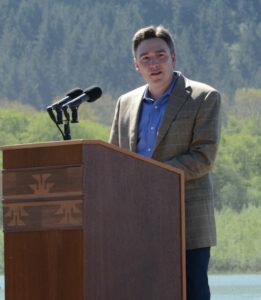 The Central Valley Flood Protection Board is happy to announce its newest Board member, Brian Johnson, has been appointed today by Governor Newsom. Johnson has been California director at Trout Unlimited since 2011, where he was director of the California water program from 2005 to 2011. He was an associate at Shute, Mihaly & Weingerger LLP from 2000 to 2005, associate director for communications at the Council on Environmental Quality, Executive Office of the President from 1993 to 1997, and manager of Energy Star Computers for the U.S. Environmental Protection Agency, Office of Air and Radiation from 1991 to 1993. Johnson earned a Juris Doctor degree from Stanford Law School. Welcome, Brian!
The Central Valley Flood Protection Board is happy to announce its newest Board member, Brian Johnson, has been appointed today by Governor Newsom. Johnson has been California director at Trout Unlimited since 2011, where he was director of the California water program from 2005 to 2011. He was an associate at Shute, Mihaly & Weingerger LLP from 2000 to 2005, associate director for communications at the Council on Environmental Quality, Executive Office of the President from 1993 to 1997, and manager of Energy Star Computers for the U.S. Environmental Protection Agency, Office of Air and Radiation from 1991 to 1993. Johnson earned a Juris Doctor degree from Stanford Law School. Welcome, Brian!
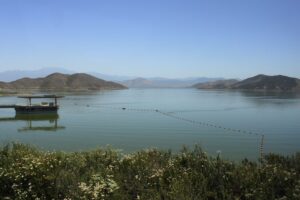
From mavensnotebook.com – At the January meeting of the California Water Commission, staff updated the commissioners on the status of the projects in the Water Storage Investment Program (WSIP). Amy Young, the Commission’s WSIP Program Manager, updated the Commission on the program schedule going forward, recent activity by the applicants, and how the projects will be coming before the Commission. In 2018, the Commission completed the application review process and made Maximum Conditional Eligibility Determinations or MCEDs for the eight projects under the Water Storage Investment Program. In order to receive the funding, applicants must complete certain requirements spelled out in Prop 1 and the Commission’s regulations for the program, so applicants have been moving forward with their projects to meet the statutory and regulatory requirements of the WSIP.(more)
 From The Association of California Water Agencies – ACWA has created and released all 10 episodes of the video series, “California H2O: Flowing For the Future” to help member agencies inform their customers, elected officials and key stakeholders about critical water issues. The final four videos debuted last week at ACWA’s Fall Conference & Exhibition in San Diego. The videos offer a statewide perspective on important water issues and feature interviews with member agencies to highlight the innovation and collaboration of local agencies. (more)
From The Association of California Water Agencies – ACWA has created and released all 10 episodes of the video series, “California H2O: Flowing For the Future” to help member agencies inform their customers, elected officials and key stakeholders about critical water issues. The final four videos debuted last week at ACWA’s Fall Conference & Exhibition in San Diego. The videos offer a statewide perspective on important water issues and feature interviews with member agencies to highlight the innovation and collaboration of local agencies. (more)
 From The Northern California Water Association – The Public Policy Institute of California (PPIC) Water Center today published a new report on A Path Forward for California’s Freshwater Ecosystems. We think there is much to learn from this report and recommend a close reading. The water resources managers in the Sacramento River Basin have engaged with the PPIC and are exploring ways to apply new and innovative approaches in the region, particularly how to more effectively integrate freshwater ecosystem budgets into our multi-benefit water management approaches. (more)
From The Northern California Water Association – The Public Policy Institute of California (PPIC) Water Center today published a new report on A Path Forward for California’s Freshwater Ecosystems. We think there is much to learn from this report and recommend a close reading. The water resources managers in the Sacramento River Basin have engaged with the PPIC and are exploring ways to apply new and innovative approaches in the region, particularly how to more effectively integrate freshwater ecosystem budgets into our multi-benefit water management approaches. (more)
 From The Press Democrat – Sonoma County sustained more than $5 billion in damage from megastorms known as atmospheric rivers over 40 years, the hardest hit among 414 counties in 11 western states, according to a new study. The flood-prone county’s economic toll was tops by far, with Lewis County, Oregon in second place with $3 billion in damage, according to the study, which calculated the cost of 1,603 atmospheric rivers from 1978 to 2017. The 1995 storm that inundated Guerneville for three days, pushing the Russian River to its second highest flood level since 1940, was ranked the most destructive atmospheric river in the study period.
From The Press Democrat – Sonoma County sustained more than $5 billion in damage from megastorms known as atmospheric rivers over 40 years, the hardest hit among 414 counties in 11 western states, according to a new study. The flood-prone county’s economic toll was tops by far, with Lewis County, Oregon in second place with $3 billion in damage, according to the study, which calculated the cost of 1,603 atmospheric rivers from 1978 to 2017. The 1995 storm that inundated Guerneville for three days, pushing the Russian River to its second highest flood level since 1940, was ranked the most destructive atmospheric river in the study period.
Insured losses in Sonoma County exceeded $50 million from the January 1995 storm that made landfall in Southern California and did $3.7 billion in total damage. All told, atmospheric rivers — a global phenomena that play a key role in the world’s water supply, unleashing floods and ending droughts — did $42.6 billion in damage, about $1.l billion a year, according to the study published this week in journal Science Advances. (more)
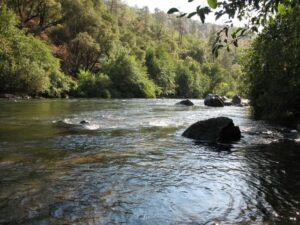 From Recordnet.com – There’s progress to report in the momentous task of ensuring that San Joaquin County and surrounding communities have enough water to meet anticipated needs for the next 20 years. Earlier this month, the Eastern San Joaquin Groundwater Authority — or ESJGWA, comprised of 16 area agencies including cities, counties and water districts — recommended that each of its member agencies adopt a mutually agreed upon Groundwater Sustainability Plan by Jan. 8. Each Groundwater Sustainability Plan should outline how the individual agency will achieve groundwater sustainability by 2040 and include measurable objectives and milestones in five-year increments. (more)
From Recordnet.com – There’s progress to report in the momentous task of ensuring that San Joaquin County and surrounding communities have enough water to meet anticipated needs for the next 20 years. Earlier this month, the Eastern San Joaquin Groundwater Authority — or ESJGWA, comprised of 16 area agencies including cities, counties and water districts — recommended that each of its member agencies adopt a mutually agreed upon Groundwater Sustainability Plan by Jan. 8. Each Groundwater Sustainability Plan should outline how the individual agency will achieve groundwater sustainability by 2040 and include measurable objectives and milestones in five-year increments. (more)
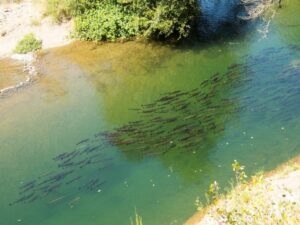 From ACWA – Five ACWA member agencies recently celebrated the completion of a habitat restoration project on the Sacramento River that produced results within a week.
From ACWA – Five ACWA member agencies recently celebrated the completion of a habitat restoration project on the Sacramento River that produced results within a week.
The Rio Vista Side Channel Habitat Project in Red Bluff converted a seasonal side channel into nearly one acre of new aquatic habitat that will flow throughout the year. This creates refuge for juvenile salmonids before they migrate out to sea by providing slower flows, sources of food and protective cover from predators. The project also included native riparian planting. Within a week, a biologist snorkeling through the side channel observed endangered winter-run Chinook salmon juveniles using submerged vegetation for cover. (more)
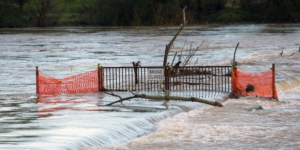
Event to be held at the following time and date: Monday, November 18, 2019 from 12:00 PM to 1:00 PM (PST)
Learn about resources that will help you prepare your agency for flood season in California. Curious about the outlook for this winter’s weather? Ever wondered about roles and responsibilities for state and local agencies during floods? Need to know how to request flood fight resources? Based on the information shared during the annual preseason flood coordination meetings, this webinar will help you prepare your agency for flood response this winter. Elizabeth Bryson and Cindy Matthews will provide valuable resources and information about what to expect this year. (more)
 From mavensnotebook.com – The Water Infrastructure Improvements for the Nation (WIIN) Act was enacted by Congress on December 16, 2016. The purposes of the WIIN Act include improving water infrastructure across the country. Section 4007 addresses water projects in California and makes funding available to build water storage projects in California. The proposed regulations provide the process for a project proponent to obtain the California Water Commission’s determination that the project is consistent with Proposition 1, which was codified as Division 26.7 of the California Water Code and approved by voters in November 2014. (more)
From mavensnotebook.com – The Water Infrastructure Improvements for the Nation (WIIN) Act was enacted by Congress on December 16, 2016. The purposes of the WIIN Act include improving water infrastructure across the country. Section 4007 addresses water projects in California and makes funding available to build water storage projects in California. The proposed regulations provide the process for a project proponent to obtain the California Water Commission’s determination that the project is consistent with Proposition 1, which was codified as Division 26.7 of the California Water Code and approved by voters in November 2014. (more)


 The Central Valley Flood Protection Board is happy to announce its newest Board member, Brian Johnson, has been appointed today by Governor Newsom. Johnson has been California director at Trout Unlimited since 2011, where he was director of the California water program from 2005 to 2011. He was an associate at Shute, Mihaly & Weingerger LLP from 2000 to 2005, associate director for communications at the Council on Environmental Quality, Executive Office of the President from 1993 to 1997, and manager of Energy Star Computers for the U.S. Environmental Protection Agency, Office of Air and Radiation from 1991 to 1993. Johnson earned a Juris Doctor degree from Stanford Law School. Welcome, Brian!
The Central Valley Flood Protection Board is happy to announce its newest Board member, Brian Johnson, has been appointed today by Governor Newsom. Johnson has been California director at Trout Unlimited since 2011, where he was director of the California water program from 2005 to 2011. He was an associate at Shute, Mihaly & Weingerger LLP from 2000 to 2005, associate director for communications at the Council on Environmental Quality, Executive Office of the President from 1993 to 1997, and manager of Energy Star Computers for the U.S. Environmental Protection Agency, Office of Air and Radiation from 1991 to 1993. Johnson earned a Juris Doctor degree from Stanford Law School. Welcome, Brian!
 From The Association of California Water Agencies – ACWA has created and released all 10 episodes of the video series, “California H2O: Flowing For the Future” to help member agencies inform their customers, elected officials and key stakeholders about critical water issues. The final four videos debuted last week at ACWA’s Fall Conference & Exhibition in San Diego. The videos offer a statewide perspective on important water issues and feature interviews with member agencies to highlight the innovation and collaboration of local agencies. (
From The Association of California Water Agencies – ACWA has created and released all 10 episodes of the video series, “California H2O: Flowing For the Future” to help member agencies inform their customers, elected officials and key stakeholders about critical water issues. The final four videos debuted last week at ACWA’s Fall Conference & Exhibition in San Diego. The videos offer a statewide perspective on important water issues and feature interviews with member agencies to highlight the innovation and collaboration of local agencies. ( From The Northern California Water Association – The Public Policy Institute of California (PPIC) Water Center today published a new report on
From The Northern California Water Association – The Public Policy Institute of California (PPIC) Water Center today published a new report on  From The Press Democrat – Sonoma County sustained more than $5 billion in damage from megastorms known as atmospheric rivers over 40 years, the hardest hit among 414 counties in 11 western states, according to a new study. The flood-prone county’s economic toll was tops by far, with Lewis County, Oregon in second place with $3 billion in damage, according to the study, which calculated the cost of 1,603 atmospheric rivers from 1978 to 2017. The 1995 storm that inundated Guerneville for three days, pushing the Russian River to its second highest flood level since 1940, was ranked the most destructive atmospheric river in the study period.
From The Press Democrat – Sonoma County sustained more than $5 billion in damage from megastorms known as atmospheric rivers over 40 years, the hardest hit among 414 counties in 11 western states, according to a new study. The flood-prone county’s economic toll was tops by far, with Lewis County, Oregon in second place with $3 billion in damage, according to the study, which calculated the cost of 1,603 atmospheric rivers from 1978 to 2017. The 1995 storm that inundated Guerneville for three days, pushing the Russian River to its second highest flood level since 1940, was ranked the most destructive atmospheric river in the study period. From Recordnet.com – There’s progress to report in the momentous task of ensuring that San Joaquin County and surrounding communities have enough water to meet anticipated needs for the next 20 years. Earlier this month, the Eastern San Joaquin Groundwater Authority — or ESJGWA, comprised of 16 area agencies including cities, counties and water districts — recommended that each of its member agencies adopt a mutually agreed upon Groundwater Sustainability Plan by Jan. 8. Each Groundwater Sustainability Plan should outline how the individual agency will achieve groundwater sustainability by 2040 and include measurable objectives and milestones in five-year increments. (
From Recordnet.com – There’s progress to report in the momentous task of ensuring that San Joaquin County and surrounding communities have enough water to meet anticipated needs for the next 20 years. Earlier this month, the Eastern San Joaquin Groundwater Authority — or ESJGWA, comprised of 16 area agencies including cities, counties and water districts — recommended that each of its member agencies adopt a mutually agreed upon Groundwater Sustainability Plan by Jan. 8. Each Groundwater Sustainability Plan should outline how the individual agency will achieve groundwater sustainability by 2040 and include measurable objectives and milestones in five-year increments. ( From ACWA – Five ACWA member agencies recently celebrated the completion of a habitat restoration project on the Sacramento River that produced results within a week.
From ACWA – Five ACWA member agencies recently celebrated the completion of a habitat restoration project on the Sacramento River that produced results within a week.
 From mavensnotebook.com – The Water Infrastructure Improvements for the Nation (WIIN) Act was enacted by Congress on December 16, 2016. The purposes of the WIIN Act include improving water infrastructure across the country. Section 4007 addresses water projects in California and makes funding available to build water storage projects in California. The proposed regulations provide the process for a project proponent to obtain the California Water Commission’s determination that the project is consistent with Proposition 1, which was codified as Division 26.7 of the California Water Code and approved by voters in November 2014.
From mavensnotebook.com – The Water Infrastructure Improvements for the Nation (WIIN) Act was enacted by Congress on December 16, 2016. The purposes of the WIIN Act include improving water infrastructure across the country. Section 4007 addresses water projects in California and makes funding available to build water storage projects in California. The proposed regulations provide the process for a project proponent to obtain the California Water Commission’s determination that the project is consistent with Proposition 1, which was codified as Division 26.7 of the California Water Code and approved by voters in November 2014.